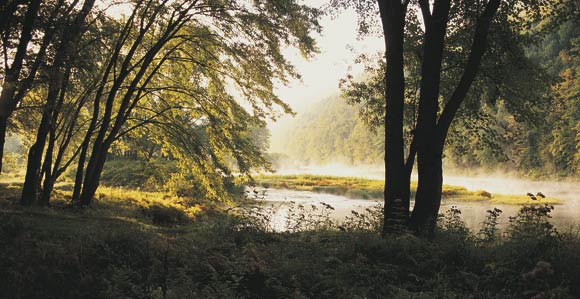Church to Restore Site of Book of Mormon Translation
Contributed By Heather Wrigley, Church News and Events

The Susquehanna River, where Joseph Smith and Oliver Cowdery received the Aaronic Priesthood and were baptized, will be part of a historic site the Church has announced it will restore.
Article Highlights
- The Church plans to restore a historic site formerly known as the town of Harmony, near Susquehanna, Pennsylvania.
- Several historic buildings will be reconstructed.
- Monuments commemorating the restoration of the Aaronic Priesthood will be erected.
“We’re excited about highlighting this location and the events that took place there in Church history. We hope members will be able to feel of the significance of the events that occurred there in terms of the Restoration and Joseph Smith beginning his role as a prophet.” —Mark Staker, senior researcher
Related Links
The First Presidency has announced plans to restore a historic site formerly known as Harmony (near present-day Susquehanna), Pennsylvania, USA, where the Prophet Joseph Smith translated much of the Book of Mormon and where John the Baptist restored the Aaronic Priesthood in 1829.
The project will include construction of historic buildings and the farm setting at Harmony as well as monuments commemorating the restoration of the Aaronic and Melchizedek Priesthood in 1829. The groundbreaking is expected to take place in 2012, and the project is estimated to take two years to complete.
Harmony, Pennsylvania, was the site where Joseph Smith translated much of the Book of Mormon between 1827 and 1830. There the prophet received 15 of the earliest revelations contained in the Doctrine and Covenants.
At the same site, as recorded in Joseph Smith—History 1:66—75, Joseph Smith and Oliver Cowdery received the Aaronic Priesthood from John the Baptist in 1829. Peter, James, and John conferred the Melchizedek Priesthood upon them there a short time later.
Mark Staker, senior researcher in the historic sites group of the Church History Department, said that the department has already begun archeological research to identify the location of some of the original buildings in the area.
“We are looking to restore the home where Joseph and Emma lived in Harmony as well as the birthplace of Emma Smith and her family home,” he said.
Emma Smith was born in a small log cabin that was expanded into a two-story frame home later on, although the cabin remained attached.
“We are working to understand what the buildings looked like,” Brother Staker said. “We’re looking at landscapes and looking towards interpreting the significant events in Church history that took place there.”
A sculpture of the Prophet Joseph Smith and Oliver Cowdery receiving the Aaronic Priesthood already exists on the 90-acre site. Plans for new monuments are being designed. There are also plans to construct a visitors’ center on location at the site.
The property includes a sugar maple grove and a cemetery where Joseph and Emma’s infant son Alvin is buried, as well as Emma’s parents.
“We’re excited about highlighting this location and the events that took place there in Church history,” Brother Staker said. “We hope members will be able to feel of the significance of the events that occurred there in terms of the Restoration and Joseph Smith beginning his role as a prophet.”
Church leaders have invited members who are interested to make a small, one-time contribution to the project. This can be done by specifying “Priesthood Restoration Site” on the “Other” category on the tithing slip that is available from bishops and branch presidents.
There are about two dozen historic sites around the world that the Church maintains, including those in Nauvoo, Illionois, and Kirtland, Ohio, USA. As with those sites, researchers and developers expect the Susquehanna site will draw members’ interest.
“Our historic sites help us tell the unique story of the Latter-day Saints,” said Elder Marlin K. Jensen, Church historian and recorder. “Each site is filled with historically accurate details and engaging exhibits to help people better understand who we are and what is important to us.”
